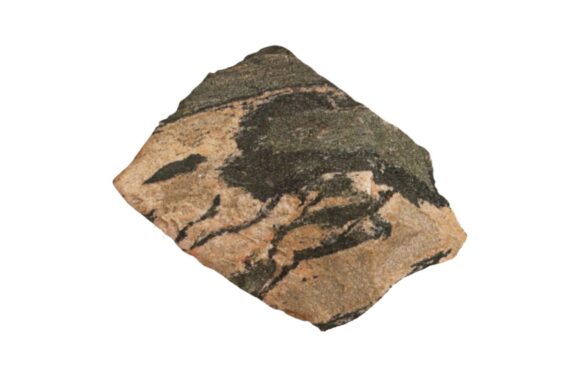Skarn

Skarn is a rock that forms when magma interacts with carbonate-rich rocks. This process causes a series of reactions that produce a unique and complex mineral assemblage. Skarns are found in a variety of geological settings, including contact metamorphic aureoles, skarn deposits, and hydrothermal veins. In this article, we will explore the characteristics, formation, and significance of Skarns.
Formation of Skarns:
Skarns form when magma intrudes into carbonate-rich rocks. The heat and pressure from the magma alter the carbonate rocks, causing them to release carbon dioxide gas. This process leads to a decrease in pressure, which triggers the precipitation of minerals. The minerals that form depend on the composition of the magma, the type of carbonate rocks present, and the temperature and pressure conditions.
Texture and Structure of Skarns:
Skarns are typically fine-grained and composed of a variety of minerals. The texture of Skarns can range from coarse-grained to fine-grained, and the rock may exhibit banding or layering. Skarns often have a distinct coloration due to the minerals present, which can include pyroxene, garnet, epidote, wollastonite, and calcite. The mineralogy of Skarns is complex, and the relative proportions of minerals present can vary depending on the specific geological environment.
Skarns can exhibit a range of structures, including breccias, veins, and disseminated mineralization. Breccias are composed of angular rock fragments that have been cemented together by minerals. Veins are narrow, linear mineral deposits that fill fractures in the rock. Disseminated mineralization is when minerals are distributed throughout the rock in small, scattered deposits.
Significance of Skarns:
Skarns are important geological features because they often host valuable mineral deposits. Many Skarns contain ores of copper, zinc, lead, gold, and silver. Skarn deposits are also significant sources of tungsten, molybdenum, and tin. Skarns are mined around the world, and they are especially prevalent in China, Russia, and the United States.
Skarns are also significant from a scientific perspective because they provide insights into the complex interactions between magma and carbonate rocks. Studying Skarns can help geologists understand the geological history of an area and the processes that shaped it.
Conclusion:
In conclusion, Skarns are a type of rock that forms when magma interacts with carbonate-rich rocks. Skarns have a complex mineralogy and can exhibit a range of textures and structures. Skarns are significant geological features because they often host valuable mineral deposits and provide insights into geological processes. Understanding Skarns is essential for geologists and mining professionals alike.
